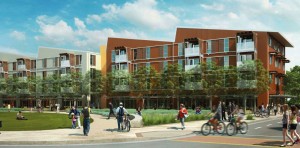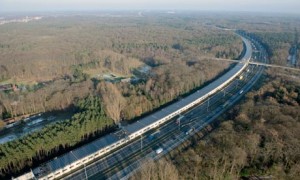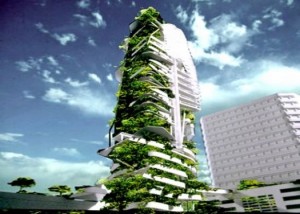
 The largest planned Zero Net Energy development in the U.S. is readying for its debut this fall. Under construction on the University of California, Davis campus, UC Davis West Village is combining advanced energy efficient design features with a 4-megawatt (MW), high efficiency SunPower solar power system to achieve the largest planned Zero Net Energy development in the nation. UC Davis West Village is the product of an innovative public-private partnership between UC Davis and West Village Community Partnership, LLC, a joint venture led by San Francisco-based Carmel Partners with their partner Urban Villages of Denver.
The largest planned Zero Net Energy development in the U.S. is readying for its debut this fall. Under construction on the University of California, Davis campus, UC Davis West Village is combining advanced energy efficient design features with a 4-megawatt (MW), high efficiency SunPower solar power system to achieve the largest planned Zero Net Energy development in the nation. UC Davis West Village is the product of an innovative public-private partnership between UC Davis and West Village Community Partnership, LLC, a joint venture led by San Francisco-based Carmel Partners with their partner Urban Villages of Denver.
“I applaud UC Davis, SunPower Corporation, Carmel Partners, and the CEC for their collaboration, dedication, and leadership in developing the largest zero net energy project in the United States,” said Lieutenant Governor Gavin Newsom. “This is a demonstration of California’s excellence in sustainability, and should set an example for the rest of the nation.””West Village is a paradigm shift in creating both a great place to live and a model Zero Net Energy community,” said Nolan Zail, senior vice president for Carmel Partners. “Our guiding principles include environmental sustainability and quality of place. West Village will include housing, recreation and retail options, providing a convenient and eco-friendly lifestyle for students, faculty and staff.
“Using aggressive energy efficiency measures and on-site renewable energy generation to meet community energy demand, this holistic approach offers new solutions in the design and construction of large-scale sustainable communities,” Zail added. The first phase of the 130-acre project, to be completed this year, will include apartment housing for 2,000 students, an education center for Los Rios Community College, recreation and study facilities, a village square surrounded by neighborhood-serving retail, and 343 single family homes for sale to faculty and staff. Two initial student housing components of the community, The Ramble Apartments and Viridian, will welcome residents September 2011.
UC Davis West Village integrates sustainable design to enable those living in the community to reduce their reliance on automobiles, limit energy consumption and enjoy the benefits of the local climate. Building designs optimize solar orientation, utilize energy efficient appliances and incorporate materials from renewable sources. A 4-MW solar power system that is manufactured, designed and installed by SunPower Corp. will generate the equivalent of 100 percent of the community’s electricity demand. The system is comprised of both rooftop solar power installations as well as solar canopies installed in parking areas.

 As the clean energy industry emerges from a challenging period caused by the global economic downturn, it is entering a stage of rapid change in which business models are being transformed against a backdrop of regulatory uncertainty. In several key sectors, the market is shifting back toward business structures and technologies that were once abandoned, but are now being revived. A new white paper from Pike Research identifies 10 key trends that are part of this transformation. The paper, which includes commentary and predictions about the state of the clean energy industry in 2011 and beyond, is available for free download on Pike Research’s website.
As the clean energy industry emerges from a challenging period caused by the global economic downturn, it is entering a stage of rapid change in which business models are being transformed against a backdrop of regulatory uncertainty. In several key sectors, the market is shifting back toward business structures and technologies that were once abandoned, but are now being revived. A new white paper from Pike Research identifies 10 key trends that are part of this transformation. The paper, which includes commentary and predictions about the state of the clean energy industry in 2011 and beyond, is available for free download on Pike Research’s website.










